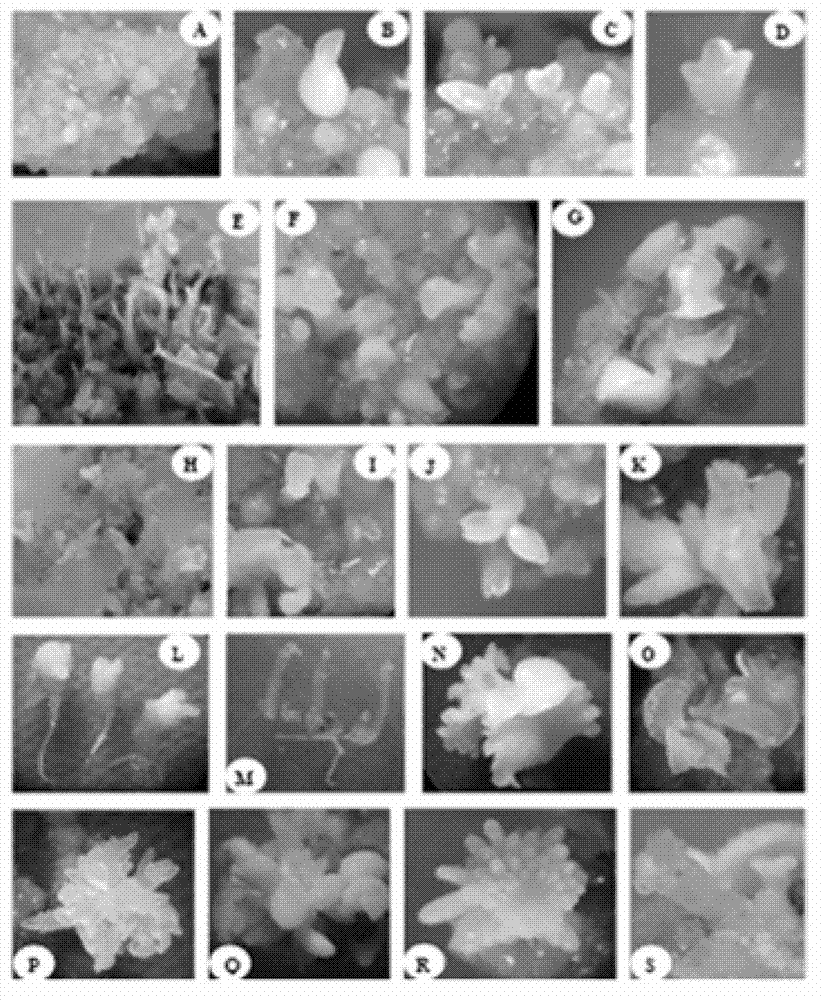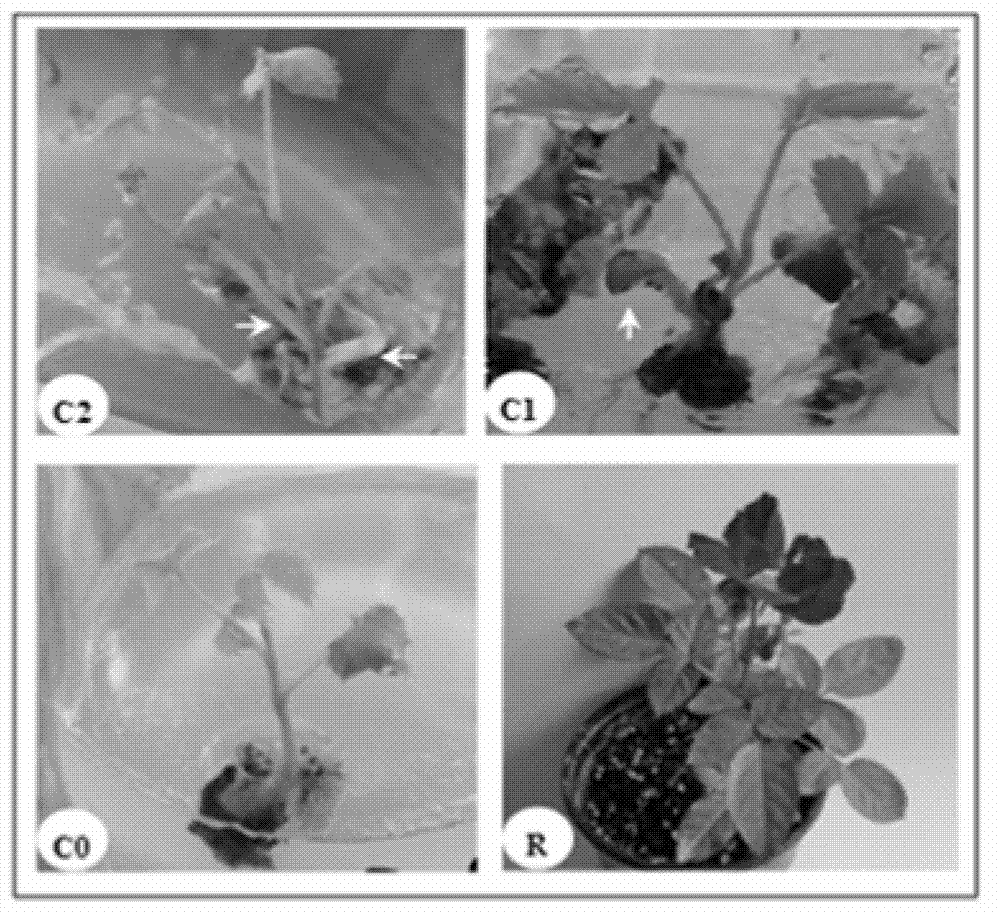Somatic embryogenesis and plant regeneration method of Rosa chinesis
A technology for embryogenesis and somatic embryos, applied in plant regeneration, botanical equipment and methods, horticultural methods, etc. The problem of low rate and regeneration rate can be achieved, and the effect of promoting the formation of cotyledons, promoting accumulation, and increasing the induction rate can be achieved.
- Summary
- Abstract
- Description
- Claims
- Application Information
AI Technical Summary
Problems solved by technology
Method used
Image
Examples
Embodiment 1
[0022] Example 1 Plant material
[0023] The annual semi-lignified branches of Yueyuehong (R. chinensis Jacq.) in the nursery of Beijing Forestry University were selected for surface disinfection (disinfected with 70% alcohol for 30 seconds, then placed in 0.3% sodium hypochlorite solution for 15 minutes, and finally with washed 3 times with sterile water). Placed in containing 6-BA 2.0mg / L, 0.1mg / L NAA and 3.0mg / L GA 3 The MS solid medium (the medium containing these hormones is named SP medium) was cultured for 2 months to produce sterile shoots. The sterile buds were subcultured to fresh SP medium every month, and all the medium was sterilized at 121°C and 125 kPa for 15 minutes after adjusting the pH value to 6.0. Culture conditions: the temperature is 23°C-27°C, 16 hours of light and 8 hours of darkness per day, and the light intensity is 1600Lux of ordinary white light.
[0024] The results showed that Yueyuehong grew normally and vigorously on SP medium, and the aver...
Embodiment 2
[0025] Induction of embodiment 2 callus
[0026] Put the aseptic buds with 1mm petiole on the EP medium (EP medium is the basic SH medium plus 3.0mg / L 2,4-D, 1mg / L TDZ and 300.0 mg / L L-preserved Amino acid, use 4.0g / L agarose to solidify the medium, adjust the pH value to 5.4), and culture in the dark at 23-27°C for 2 months.
[0027] The results showed that the medium containing 3mg / L 2,4-D and 1mg / LTDZ could produce light brown or transparent water-soaked embryogenic callus, and the induction rate was about 25%.
Embodiment 3
[0028] Example 3 Somatic Embryogenesis
[0029] Most of the embryogenic callus (usually brown loose particles, or transparent water-soaked callus) on the optimized EM medium (optimized EM medium is the basic SH medium plus 1.0mg / L 2, 4-D, 0.2 mg / L TDZ, 2.5 mg / L ABA, 3 mg / L GA 3 And 300.0 mg / L L-proline, use 4.0g / L agarose to solidify the medium. Adjust the pH value to 5.4) for culture, the culture temperature is 23°C-27°C, and the light is dark culture, or red light (400Lux, light 16h / dark 8h), or ordinary white light (1600Lux, light 16h / dark 8h). After two weeks spherical proembryos are produced (see figure 1 A). A part continued to differentiate into various types of embryos in subsequent cultures (see figure 1 B- figure 1 D).
PUM
 Login to View More
Login to View More Abstract
Description
Claims
Application Information
 Login to View More
Login to View More - R&D Engineer
- R&D Manager
- IP Professional
- Industry Leading Data Capabilities
- Powerful AI technology
- Patent DNA Extraction
Browse by: Latest US Patents, China's latest patents, Technical Efficacy Thesaurus, Application Domain, Technology Topic, Popular Technical Reports.
© 2024 PatSnap. All rights reserved.Legal|Privacy policy|Modern Slavery Act Transparency Statement|Sitemap|About US| Contact US: help@patsnap.com










